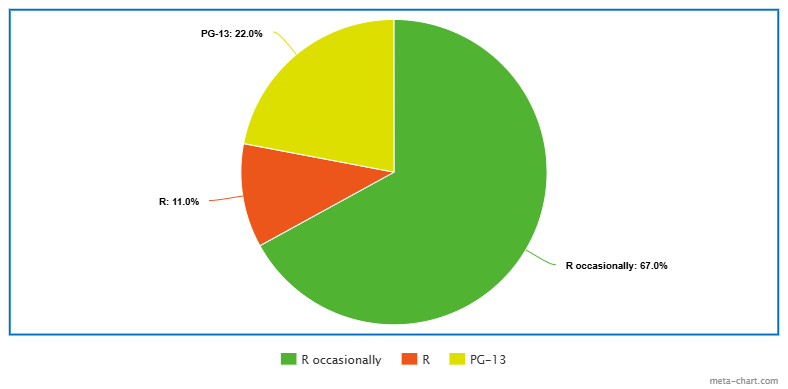Do Movie Ratings Still Make Sense?
Watching movies and TV shows is loved by people around the world. Whether the enjoyment comes from watching Netflix shows at home or cinematic blockbusters on the big screen, video entertainment is always a great way to relax and have fun with friends, family, or alone. Because of the large diversity of movies these days, age ratings are attached to target specific ages.
All movies and TV shows have age ratings to indicate the maturity of the film or show. Or do they? Nowadays, it seems that every new big hit is rated PG-13 or R, but some kids still seem to watch them regardless of the rating.

Movie age ratings are first set by the Classification and Ratings Administration (CARA), a group of parents who watch movies and rate them based on the volume of explicit content. The most common forms of explicit content are graphic violence and excessive foul language. Once CARA has a rating in mind for a movie or TV show, they send the rating to the Motion Pictures Association (MPA), which ensures that movies will have their rating displayed before the movie begins, and that streaming services display show ratings in show descriptions.
The following ratings apply: G, PG, PG-13, R, NC-17 for movies, and TV-Y, TV-PG, TV-14, TV-MA for shows. G and TV-Y are suitable for very young children, TV-PG and PG are suitable for most young children, PG-13 and TV-14 are recommended for their specific age (13 and 14) and above, and R and TV-MA suggest viewers be of adolescent age to watch. Lastly, there is also NC-17, which theaters are supposed to strictly only allow adults to watch. With these ratings and the rating system in mind, BIFU students were surveyed on their thoughts on movie age ratings and comfort with watching mature content.
The survey’s overall results leaned strongly towards most students being comfortable with R/TV-MA occasionally, or being just generally comfortable with mature entertainment. This makes sense because the mature rating, as mentioned above, contains many different reasons for a movie being mature. Some of these reasons may bother certain students, while others do not. For example, someone may not be bothered by excessive swearing but may be bothered by graphic scenes. Unfortunately, since movie ratings are usually just a single letter, it can be hard to determine exactly what mature content it has, making it difficult for viewers to decide whether they would watch it or not. Luckily, many websites and forums exist online to help combat this issue, such as Common Sense Media, which is a non-profit organization that provides detailed age-based movie reviews with descriptions of specific mature content within entertainment, and is a valuable tool for both kids watching movies and parents checking if a movie is okay for their kid to watch.
Overall, age ratings do not seem to hold a great amount of weight when it comes to BIFU students deciding on entertainment to watch. This does not necessarily mean that students are being disobedient of the age ratings either, as the system itself is not as specific as it could be. In the end, if a student watches a movie and is not disturbed by it, has nightmares, or has to avert their gaze, and they enjoy it, then it is probably that they are watching it.